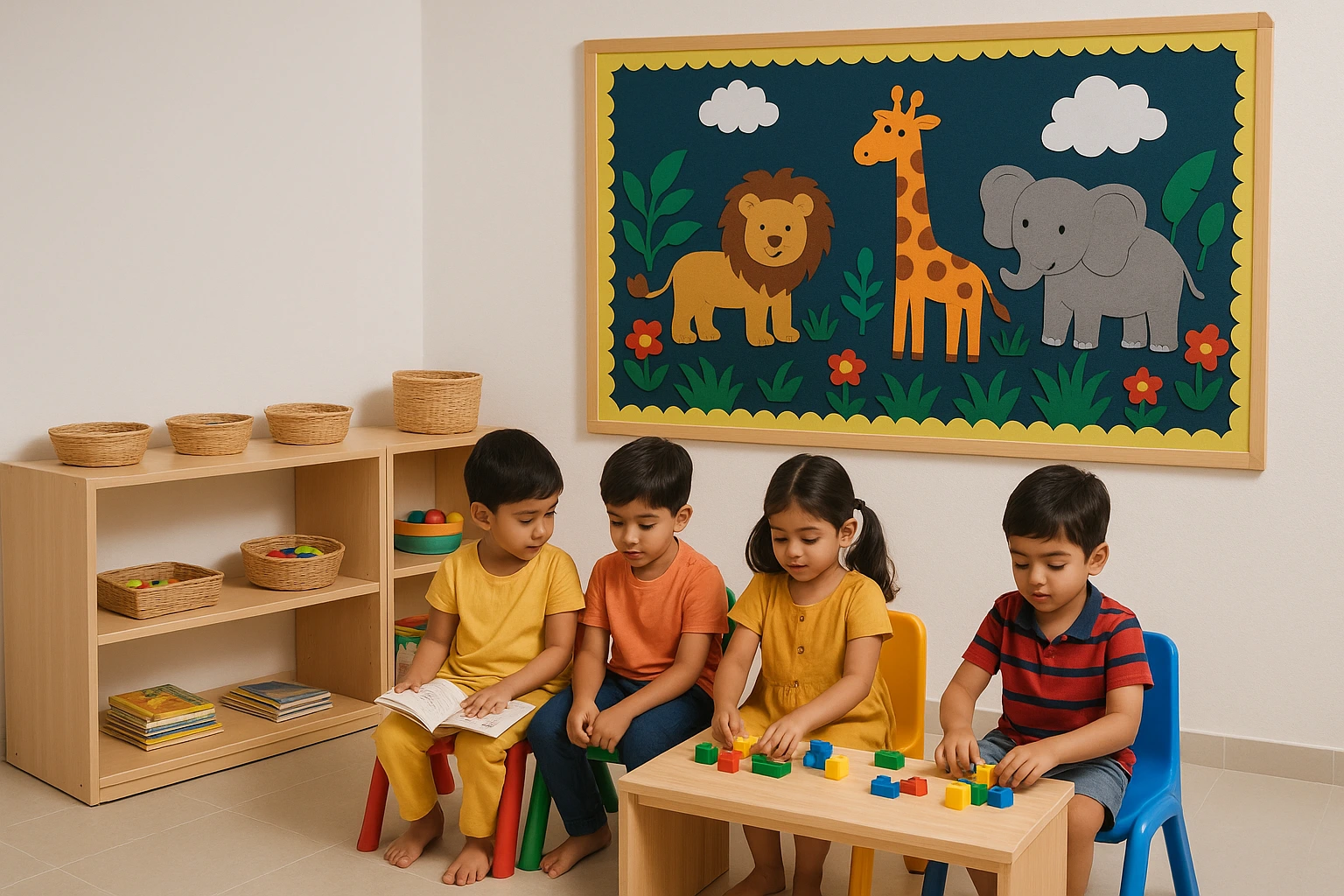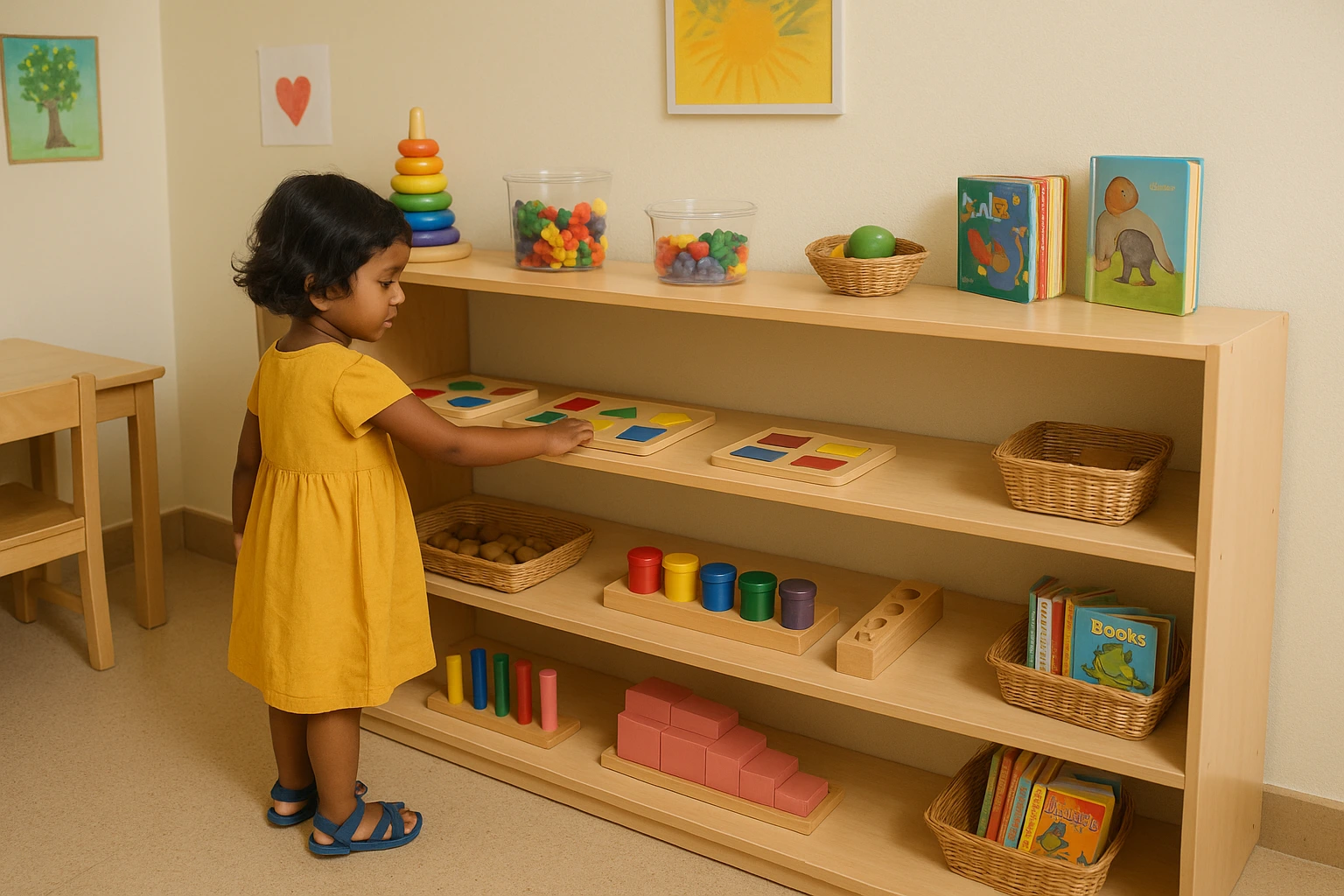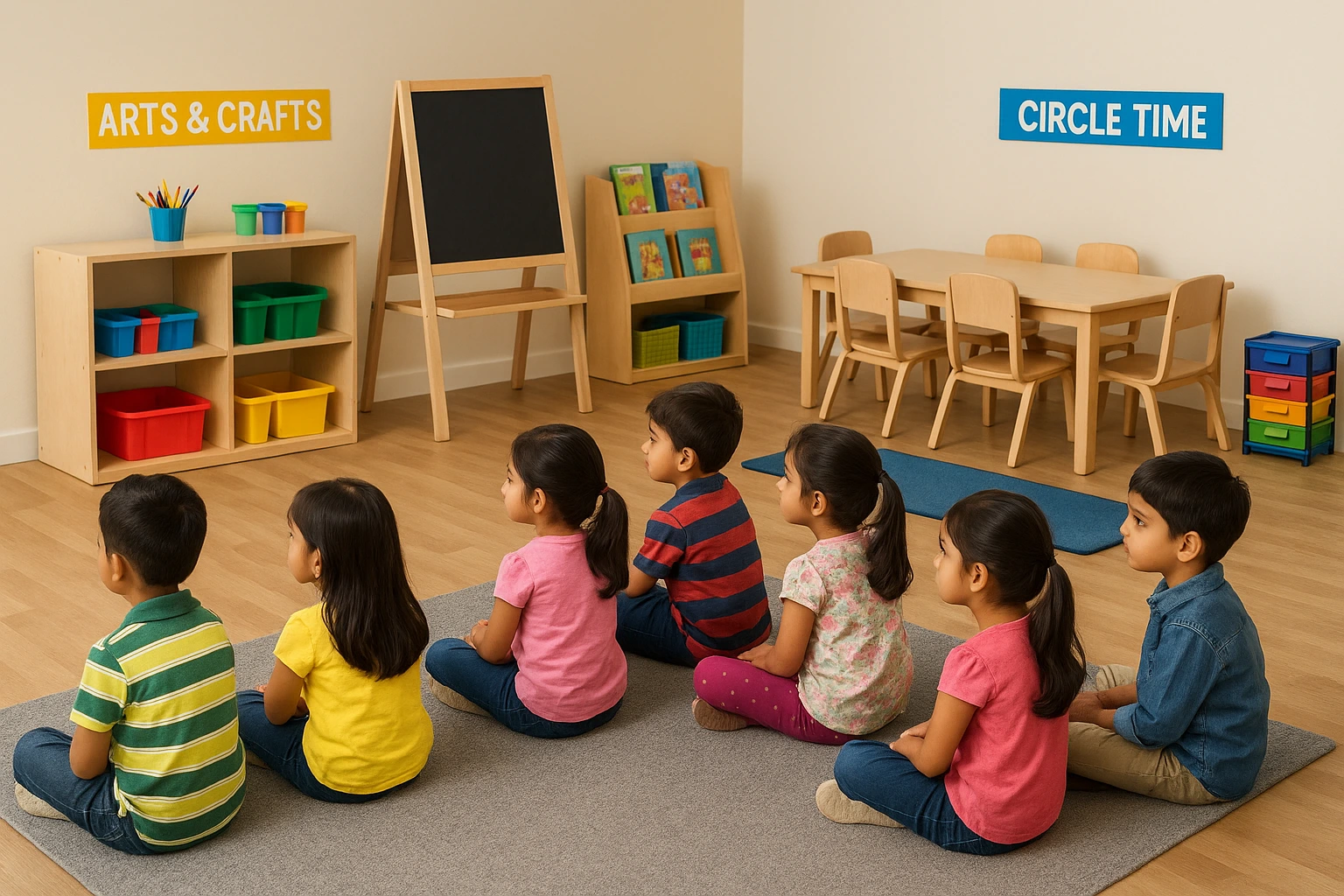Why is Classroom Organization Important?
Image made by using AI
Why is Classroom Organization Important?
A structured approach to maintain uniformity and efficiency in learning without interruptions is known as Classroom Organization.
It includes setting clear rules, maintaining a constant routine, time management, and organizing the setup of furniture, desks, and learning materials.
Classroom organization is crucial for a smooth teaching and learning process, with discipline in class, students also behave positively and stay focused.
Classroom Management allows educators to manage tasks more easily and spend more time on instruction, rather than on correcting behaviour.
Table of Content
How does Classroom Organization Affect Learning?
When the class environment is well-organized, it directly influences student behaviour and their engagement. A classroom environment promotes positivity, develops the interest of students, and provides easy access to learning materials.
Here’s how organization affects learning:
Improves Focus and Attention:
A reachable and defined space designated for materials, learning resources, and books saves time for teachers and students both. This provides more time to focus on lessons and activities, ensuring great results.
Promotes Positive Behaviour:
Clearly labelled areas and a structured seating arrangement guide students in understanding expectations. Classroom organization supports routines, which helps reduce behavioural issues and encourages responsibility among learners.
Encourages Active Participation
An organised and positive classroom atmosphere promotes interactive discussions and teamwork. Children are more likely to be involved in activities more passionate when the materials and environment are engaging. Classroom Management also benefits educators in addressing various learning challenges with a thoughtful approach to improve students’ academic performance.
Enhances Teacher’s Productivity:
Teaching aids, flashcards, charts, books, and supplies arranged in a systematic order provide easy access to educators. This approach of classroom management makes teaching productive, smooth, and helps to respond quickly to students’ needs.
Encourages Student Independence:
Classroom organization helps students find what they need. This accessibility reduces frustration, maintains interest in academic learning, and promotes independence.
Boosts Learning Outcomes:
An organised classroom helps students to concentrate effectively on lessons, topics, and syllabus taught in class and perform with successful outcomes. A structured environment reduces stress and confusion.
The foundation of efficient teaching is measured by effective classroom management; it contributes to a productive and focused learning atmosphere. It significantly enhances children’s education, making them excel in academics.
To download the brochure of School Administration Course, Click Here!
Call or Whatsapp on +919869546913 / +919869866277, to know more about School Administration Course!

Source: campbellsville
Factors Affecting Classroom Management and Organization
Effective classroom management and organization are ensured by several factors that contribute to creating an engrossed and creative learning environment.
Here is detailed information on Factors Affecting Classroom Management and Organization:
Arrangement of the Classroom
Accurate seating arrangement, easy access to resources and clear visibility of boards, eliminate unnecessary movement. When the potential distractions and disruptions are reduced, teachers can connect more inclusively with students.
Teacher’s Communication Style
A teacher’s tone, clarity, and consistency affect classroom management directly. Clear expectations and respectful communication strengthen classroom organization by helping students understand rules and routines. Consistent instructions reduce confusion and create a secure environment for learning.
Student Behaviour and Diversity
A classroom consists of different learning styles and behaviours that affect the smooth space. Careful observation, applying the right methods to address these challenges, ensures that every child receives appropriate assistance in learning.
Classroom Expectations & Rules
Establishing meaningful and purposeful rules contributes significantly to classroom management. Children become conscious of bad misbehaviour and their consequences.
Time Management
Creating a timetable of daily classroom activities and writing them on the board helps to work accordingly. This helps students & teachers to maintain order without getting confused.
Availability of Resources
Easy access to teaching aids, books, and technological tools contributes to effective classroom management, benefiting both teachers and students. Educators can utilize their time more on teaching than in looking for instruction aids.
Classroom organization is an ongoing process; teachers should maintain consistency in addressing these factors for effective classroom arrangement. This way, students will feel secure, supported, and guided.
To download the brochure of School Administration Course, Click Here!
Call or Whatsapp on +919869546913 / +919869866277, to know more about School Administration Course!

Image made by using AI
Managing Classroom Space and Material
A thoughtful classroom organization involves managing class space and materials in a structured manner. A thoughtful furniture setup and flexible seating ensure that space is utilized correctly. Arranging materials in a way which conveniently accessible to students and teachers reduces disruptions and saves time in learning.
Here are some key strategies to improve Classroom Organization:
Defined Learning Areas
Creating colourful and well-labelled areas for specific activities like crafts, arts, reading, quiet time, and games eliminates chaos and develops independence.
Easy Access to Materials
Store supplies where students can reach them without assistance. Use bins for effective organization.
Minimal Clutter
A clean space brings positivity, keep only necessary materials within the student’s reach so that they mess with other materials. Preparing theme-based resources or boards maintains students’ interest.
Traffic Flow Planning
A smooth traffic pattern includes setting classroom furniture and materials in such a way that promotes easy movements of students. This provides safety and reduces the risk of getting hurt.
Visual Aids and Schedules
To make students understand what’s expected in the class, use bulletin boards, picture charts, and visual timetables of daily routines. These engaging tools create awareness and mindfulness.
Student Involvement
Assign students with simple tasks like passing out materials, books, and cleaning up after eating. This develops responsibility and confidence in doing tasks without an adult’s help.
Applying these methods will help teachers create a learning space that is attractive and helpful for all students.
To download the brochure of School Administration Course, Click Here!
Call or Whatsapp on +919869546913 / +919869866277, to know more about School Administration Course!

Image made by using AI
Effective Classroom Organization Strategies for a Successful Academic Year
Following the right approach to classroom organization ensures a successful academic year. Thoughtful planning at the start of the year will lead to a positive environment. reduced disruptions, students’ engagement, and focused learning.
The Diploma in School and Administration offered by Vidhyanidhi Education Society (Govt. Regd.) is perfect for educators aiming to gain professional guidance. It provides in-depth training on how to plan and execute efficient classroom organization strategies.
Below are some key strategies explained in detail:
Defined Learning Zones
For better flow and functionality, provide a structured zone or corner in class for reading, arts, and games. This enhances discipline and focus.
Labelling and Visuals
Label shelves, supplies, and student belongings clearly. Visual aids like charts and instructions on bulletin boards assist in building independence. This simple step improves classroom organization by reducing confusion and saving time.
Consistent Routines
Establishing routines of daily classroom activities creates awareness of expectations and offers a smooth transition.
Accessible Supplies
Boosts students’ independence by keeping learning materials at a minimum height to make them accessible and convenient for them to reach.
Classroom Setup
Arrange desks to encourage interaction and smooth movement in between. A thoughtful classroom layout improves learning flow and reduces disruptions.
The Diploma in School and Administration by Vidhyanidhi Education Society (Govt. Regd.) trains educators to implement these strategies efficiently. Through the Diploma in School and Administration, educators gain skills in planning, space management, and fostering a structured environment, essential for every successful classroom.
Master classroom success—join Vidhyanidhi’s School Administration Course today!
To download the brochure of School Administration Course, Click Here!
Call or Whatsapp on +919869546913 / +919869866277, to know more about School Administration Course!
FAQs
What is the Purpose of Organization in Education?
The purpose of an organization in education is create a well-structured class where children are disciplined.
Which Organisation is Responsible for Education?
The Ministry of Education in India is responsible for education-related work.





